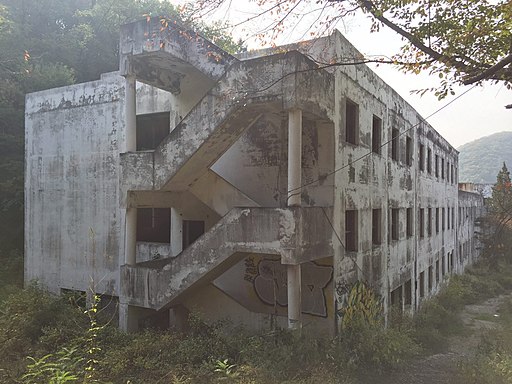A prison qua prison is impossible to escape: it therefore determines spacetime trajectories bounded on their spatial projections.
//
Haunted houses do the same, but they also bound trajectories on their event projections. You can't escape the bounded place. Most importantly you can't escape the fixed event (as an orthogonal dimension to space and time).
//
A tragedy is a haunted house with the prison-like spatial constraint removed. You are free to move yet not to escape the event. An equivalent definition is that a tragedy is a haunted cosmos, which is another species of house.
//
In a tragedy and in the purest haunted houses there's an illusion of a choice of trajectories, which are only visibly bounded from the outside. A labyrinth is therefore a better dual to the tragedy as long as it's not known to be one.
//
Labyrinths are engineered. Tragedies are the result of events so extreme that they shatter the topology of events to pull or trajectories back to themselves. A black hole is a spacetime tragedy rather than a prison (unless xenoengineering is capable of creating them).
//
Can an event shatter spacetime into a labyrinth? The difference between labyrinth and prison is having a map that shows where and how one can move. The best map of a prison, like the map of a tragedy, is a point.
//
But a tragedy can be engineered too. Atreus tricked Thyestes into eating his own children, crossing the threshold into tragedy. It's doubtful whether one can do so without becoming trapped into one itself, if one is simply tricking somebody else into entering one's haunted house, or if it's the walking between rooms of a shared one.
//
Engineering a haunted house requires more precision than engineering a tragedy. Deliberate desecration is a delicate art. This suggests the existence of specialists.
//
If we see a website as a place, then the self-assumed work of technologists is to create places that people enter but do not leave (labyrinths, not prisons). As the only possible limitation to movement is not choosing to leave, this requires a repetitive emotional state caused by a repetitive event, however superficially distinct from previous and future ones. A website designed to maximize the length of spacetime trajectories in its domain is then isomorphic to a haunted house. As this haunting was deliberate, it can be described as a desecrated web page: trajectories once you enter it are bound in space and event.
The hallway you scroll through is infinite in time, but you can't really move and the same thing is always about to happen. This is a standard architectural element in any haunted house.
//
To return to the question (having the doubtful illusion of free movement): can somebody enter a tragedy if they weren't already on it? Is every family that moves into a haunted house simply moving from a haunted world into a smaller space? Such situations can be described as a haunted cosmos collapsing. As the radius goes from cosmological to architectural it becomes perceptible enough; haunted houses can be thought of as a pedagogical device to illustrate tragedy.
//
So can an innocent enter a haunted house? This isn't the same as entering the house itself: the hero's trajectory is spacetime-bound to enter the house, but not so on the event dimension. Inhabiting the same spacetime doesn't imply inhabiting the same set of possible trajectories. The hero, of course, is bound to its own. A hero dispelling a haunting is the intersection of two tragedies. Most often this isn't a battle but a hallway between slightly separate rooms.
In any case, that's a key distinction in the taxonomy of moralities.
//
The external walls of a haunted house are akin to an event horizon, but not all trajectories that enter them collapse into the fixed spacetime point of death. If your event space keeps collapsing you become a fixed event: a ghost. The alternative might be worse.
//
In either case, while being in a haunted house (and this excludes, as we said, the hero roaming the rooms) we cannot avoid being part of it in the sense that our actions can avoid pushing others deeper into the house no more than they can do it for ourselves. There's no ethical habitation under a tragedy's roof.
//
Psychotherapy's view, for what it's worth, is that the mapping of tragedy, akin to the mapping of a labyrinth, allows if not escape at least a widening of range. A therapist is a sort of aerial cartographer, but a believable map can only be built piecemeal, from the ground up.
At least that's the theory.
//
A theory, like a website, is a labyrinth we inhabit for practical reasons. Forgetting this turns it into a haunted house.
None
None
